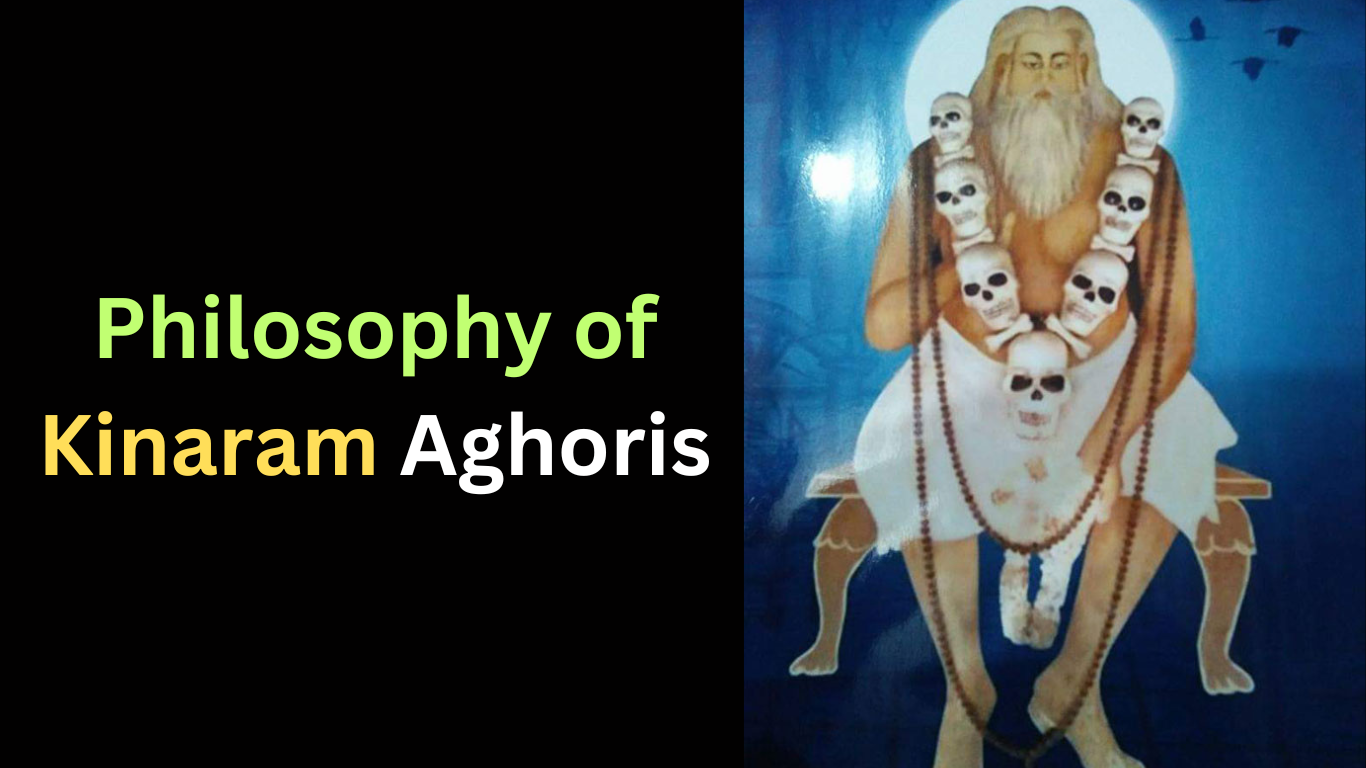Philosophy of Kinaram Aghoris

Kinaram Aghoris
The tradition of Kinaram Aghoris comes under Shiva Yoga. Despite being tantrik Aghoris, they often engage in the usage of Veda mantras as per their adhikara bheda (breach of rights) and also follow several practices of the Shiva Yoga tradition, which is well observed in Viveksar, which is the most authoritative treatise on the darshan of Kinaram Aghoris, composed by Aghoreshvar Baba Kinaram himself.
Shiva Yoga Tradition
Before we delve into the subject of the philosophical standpoint of Kinaram Aghoris, it’s important to discuss the basic structure of the Shiva Yoga tradition. This tradition is unique in itself as it incorporates the elements of Ashtanga and Hatha Yog into their system along with the use of tantra Vidya and yet has advaita as darshan; however, this advaita is slightly different from what one thinks in its mainstream sense.
In Shiv Yog, despite there being no difference between Brahm and Aatma. Jiva is different from Brahm and Ishvar; each has its unique definition. Also, Ishvar and Brahm are regarded as the same concept in this tradition.
Why Shiv is called Pashupati
The Advaita of Shiv Yog is well explained in Shiv Puran itself, where it’s stated that there is no difference between Brahm and Aatma as both are essentially of the same tattva; both are pure consciousness, yet the Jiva is different from ishvar. Jiva in this tradition isn’t the Aatma but the Aatma inside the body, which gets deluded on account of misidentification of the self with the body.
Ishvar or Shiv causes this misidentification; Shiv is called Pashupati, and Jiva is called Pashu.
Only when the pasha is removed can the jiva truly obtain the state of Shivoham, which is the identification of the self with Shiv. Such a state can be obtained only using realization through rigorous sadhanas; any speculation on this Shivoham without any experience of the actual feeling is to be strictly discarded as it only leads to ahamkara.
The very meaning of Ishvar is the one who possesses lordship, as no specific case is mentioned for Ishvar here, as take the term to denote the one who has lordship over all. And who is the one with such power? It is Shiv; he is Parabrahm; he is Ishvar, and he is the lord of the entire cosmos.
Thus, in the tradition of Shivyog, the world, or jagad, is regarded as existing; Jiva and Brahm add different things, but Aatma and Brahm are the same being.
Philosophy of Kinaram Aghoris
The very intent of practicing Shiv yoga and tantras is to realize Shivoham; it is to realize the divinity within and outside. There’s a special emphasis made on the point of direct experience in Shiv Yog.
This is well reflected in several places in Viveksar as well. Doha 219 of Viveksar goes as:
शङ्काई संसार लखि और नहीं कछु और।
रामकिना सतगुरु कृपा निरालम्ब की ठौर।The doha translates to:
The world is pervaded by confusion. One sees something and hears something else and then concludes something entirely different, but when the sishya gets a guru and his nature merges into that of his guru, he obtains the right direction.
The next doha in line is doha 222, which goes as:
जहाँ ज्ञान को गम नहीं कर्म वहाँ नहिं जाहिं।
सो तौ प्रकट लखा दिया रामकिना घट माहिं।।Translation:
The state of realization can’t be obtained by mere means of just karma and Gyan; where even these two can’t reach, there the sishya can reach by kripa of his guru; it is the guru who gives him realization of the fact that the entirety of the cosmos itself is situated inside the self, or the aatma.
Doha 233 states:
अनुभव होते हि शिष्य तब बोले वचन विचारि।
सोऽहं सद्गुरु की कृपा संशय शोक निवारि।।Translation:
By grace of the guru and his guidance, when the sishya obtains the soham beeja and meditates on it, he obtains realization of the true nature of the self, and all his miseries are removed.
Doha 224 is the most crucial one here and goes as follows:
अहं ब्रह्ममय जीव महीं कृत जगत अकारण।
महीं निरञ्जन नाम महीं सब काम निवारण।।Translation:
When the jiva realizes that his real state is the state of brahm and obtains true comprehension of the self, or aatma, all his karmas are done and all his karmas are destroyed, he obtains the solution to every problem.
Conclusion
As seen from these dohas, the philosophy of Kinaram Aghoris is indeed the philosophy of Shiv Yog blended with tantra sadhana. While in the pure Shiv Yog system various yoga means are used to obtain this realization of the true nature of self. In the system of Kinaram Aghoris, the same is done by means of tantra margi sadhanas.